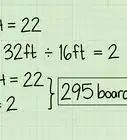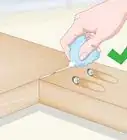This article was co-authored by wikiHow Staff. Our trained team of editors and researchers validate articles for accuracy and comprehensiveness. wikiHow's Content Management Team carefully monitors the work from our editorial staff to ensure that each article is backed by trusted research and meets our high quality standards.
wikiHow marks an article as reader-approved once it receives enough positive feedback. In this case, 81% of readers who voted found the article helpful, earning it our reader-approved status.
This article has been viewed 140,296 times.
Learn more...
If you're making your own mechanical system, making your own wooden gears is a great way to get the precise parts you need. Wooden gears are useful for low stress mechanical systems such as simple motors and various specialized systems. It's pretty easy to make a simple wooden gear at home, especially if you're using a router or jig saw.
Steps
Assembling the Supplies
-
1Receive access to a workshop. To make wooden gears, you should have access to a wood work studio. You'll need access to a band saw or jigsaw, an awl, brad point drill bits (5/16 or 8mm), and a wood rasp. You'll also need access to a printer, a smooth shank, and short wood screws.
-
2Gather the right plywood. You'll need to use Baltic birch plywood because it is very durable. You'll recognize this type of plywood based on the several layers within the wood. You could alternatively use UHMW plastic, Masonite, or phenolic resin material.
- Avoid using spruce or fir plywood because it is simply not strong enough.[1]
Advertisement -
3Use safety supplies. When handling this type of equipment it may be wise to use some safety precautions. First, never allow a young child to operate any large machinery unsupervised. Though it is not required, wear safety glasses while operating the larger machines. There's a chance of a small scrap of wood to pierce your eye.
-
4Obtain a template. Go online to a free wood generator like https://woodgears.ca/gear_cutting/template.html for your template. A generator like this allows you to modify all the aspects like tooth spacing, number of teeth, number of spokes and more. When you've created the right sized gears, print them off. Templates generally have two different sized gears. The template will allow you to make size adjustments without messing up the gear ratio. The template is designed to adjust both large and small gears together. The teeth will be the same size for both sized gears to ensure a smooth rotation.
- Generators like this even let you animate your design to test how it works.
- There are more sophisticated gear templates that are available for download as well.
- You can also create your own template using paper, pencil, and a protractor.
Cutting Out the Wood
-
1Cut out your templates. After printing out your template onto paper, you're ready to cut out the template. There is no need to individually cut out a slot for each gear on paper. Simply cut out the full circumference of the circle with the gear's teeth intact. Do this for both gears.
-
2Glue the schematic to the wood. Once the paper templates are cut out, you'll need to attach them to the plywood. Use wood glue for the best hold. You shouldn't use standard glue because it won't stick as well to the wood.
- It is important that the schematic stays intact while you make your cuts.[2]
- Allow around an hour for the glue to dry and settle to ensure nothing will mess up.
-
3Cut out the wood. Once your schematic is glued onto the plywood, you're ready to cut out the plywood's circumference. Use a band saw or a jigsaw to cut out the full circle. Be sure not to puncture any of the gears. To be safe, it is better to cut out a larger circumference than your design calls for.[3]
- If you are inexperienced working these types of power tools, ask for assistance from an experienced woodworker. Typically work studios have technicians that are there to assist. Utilize the resources around you.
-
4Punch divots into each tooth. You'll need to use an awl which is a tool with a pointed spike. Use an awl to puncture small holes (or divots) in between each tooth. Position the awl above the line between the teeth. Once the awl is in place simply bang on its butt to create a divot into the wood.
- This will act as your guide for when you use your drill.[4]
-
5Drill holes in between each tooth. Now that you have outlined where each hole will be, it's time to create the initial holes to guide your future cuts. Use a 5/16 brad point drill for each hole. Go along the gear's rotation and create a hole using the divot created earlier as a guide. Align the drill onto the divot and commence drilling.
- It's okay if the drill holes vary from the template's design.[5]
- Again, seek out someone with experience if you're unsure how to use the tool.
-
6Prepare your band saw. You'll need to make the teeth cuts at an angle for the best rotation. Tilt the table holding the wood slightly when making the cuts for the teeth of the gears. Tilt the table to the right when cutting the left lines. Then tilt the table to the left when cutting out the right lines.
- If your band saw table doesn't let you tilt to the left, you can prepare it to work. Insert a piece of plywood underneath the spacer to create a left angle.[6]
-
7Cut out your gears. You can either use a bandsaw or a jigsaw to make the final cuts for the teeth. Take time to do one side at a time to create the proper angles that will produce a smooth gear rotation. Start with right line of each tooth and cut the lines at an angle to the left. Then adjust your angle to the right and cut out all the left lines.
- Assure that the outer lines match the lines on the template. Cut out parts of the wood that extend beyond the template's line when finished. Do this if you were cautious and cut out a circumference larger than your template.
- Use your drill to cut out the center hole where the gear will rotate around.[7]
-
8Remove the outline. Use a belt sander to remove the template from the gears. You can also chip it off using a flathead screwdriver or even use sandpaper. The belt sander can be a messy process and shouldn't be handled by someone inexperienced.
-
9Add wood varnish. Apply a coat of wood varnish around the teeth and on the base to ensure the wood doesn't decay. Start with one coat and add another coat after testing the gears and ensuring everything works.[8]
Finalizing the Gears
-
1Attach a handle. Use your wooden shank as a handle for the larger gear. If you don't have a smooth shank you can use any piece of spare wood available to you. Position the shank on the outer part of the gear without overlapping into the gears, and then attach it using wood glue. Add a small wood screw to ensure a secure connection.[9]
-
2Connect the gears. Connect the gears to a contraption like a box joint in order to test them properly. If you don't have a contraption already built, you can create your own test contraption. The key is for the smaller gear to be positioned vertically and the larger gear to be at a 90 degree angle. You can create stands out of spare wood that attach to the gears at their center point.[10]
-
3Test the gears. Ensure that there isn't any place where the gears seem to struggle. Take note of any location where there seems to be a resistance with a pencil.
- If your teeth are of unequal size, you'll have to remove some material from the groove between the teeth.[11]
- Use your wood filer to file away any resistance you experience as the gears turn.
Community Q&A
-
QuestionHow do I make them roll together?
 Community AnswerBy staggering the teeth on the gears so they are located opposite from one another and will then interlock.
Community AnswerBy staggering the teeth on the gears so they are located opposite from one another and will then interlock.
Warnings
- You're working with powerful tools so use common sense.⧼thumbs_response⧽
Things You'll Need
- Jigsaw
- Belt sander or sandpaper
- Jigsaw or band saw table
- Printer
- Baltic birch plywood
- Short wood screws
- Spare wood
References
- ↑ https://woodgears.ca/gear/howto.html
- ↑ https://woodgears.ca/gear/howto.html
- ↑ https://woodgears.ca/gear/howto.html
- ↑ https://woodgears.ca/gear/howto.html
- ↑ https://woodgears.ca/gear/howto.html
- ↑ https://woodgears.ca/gear/howto.html
- ↑ https://woodgears.ca/gear/howto.html
- ↑ https://woodgears.ca/gear/howto.html
- ↑ https://woodgears.ca/gear/howto.html
- ↑ https://woodgears.ca/gear/howto.html
- ↑ https://woodgears.ca/gear/howto.html
- Videos provided by Matthias Wandel
About This Article
To make wooden gears, start by printing a template of a wooden gear and cutting it out. Then, glue the template to a piece of Baltic birch plywood, and cut around the circumference of the template with a band saw or jigsaw so you're left with a circular piece of plywood. Next, drill a hole into the wood between each tooth on the template, and then use a band saw to cut out the gears. Finally, apply some wood varnish, and attach a handle to the gear. To learn how to find a good wooden gear template for your project, keep reading!

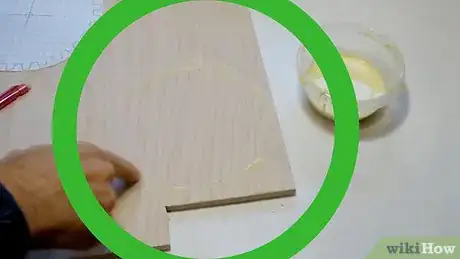



-Step-13.webp)
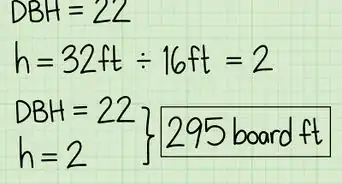
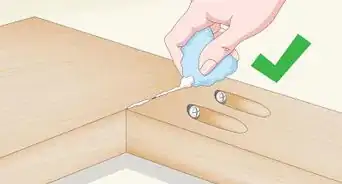

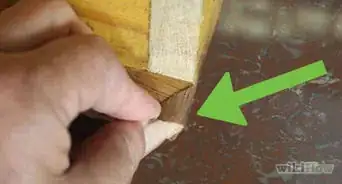
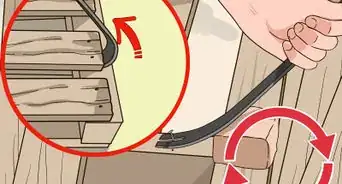
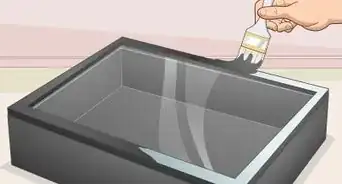
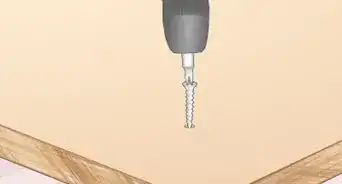

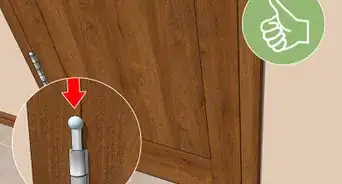
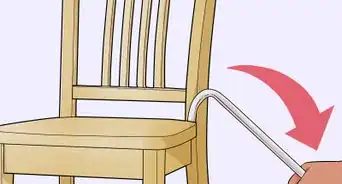










-Step-13.webp)
